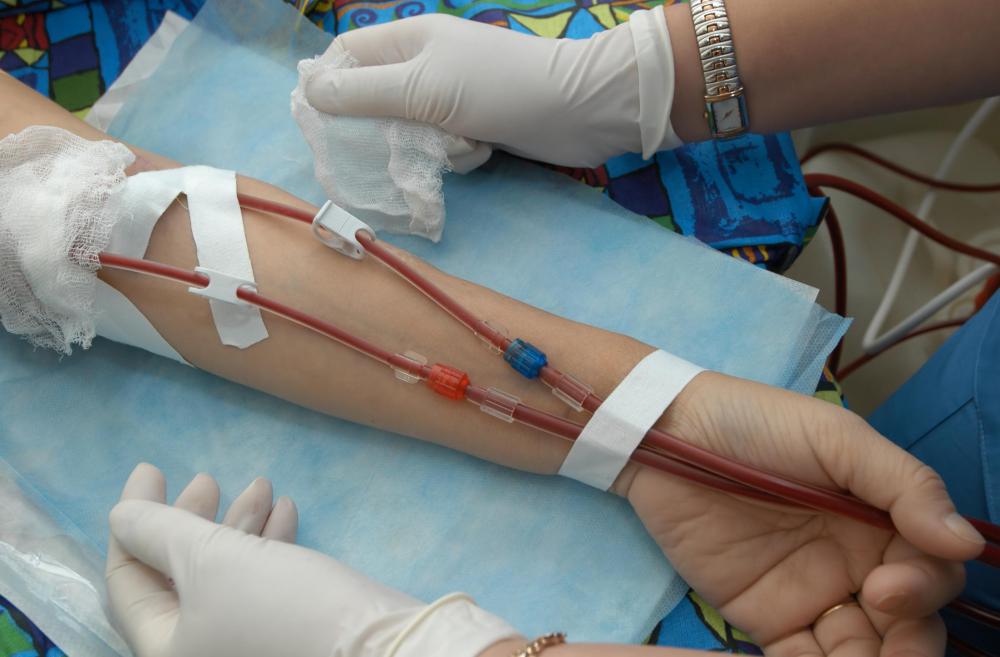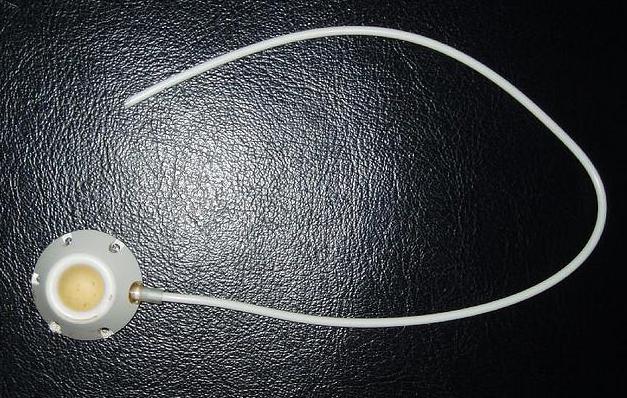At WiseGEEK, we're committed to delivering accurate, trustworthy information. Our expert-authored content is rigorously fact-checked and sourced from credible authorities. Discover how we uphold the highest standards in providing you with reliable knowledge.
What is an Exchange Transfusion?
An exchange transfusion is a medical procedure to remove blood from the body and replace it with transfused blood, donated from another person. This procedure commonly utilizes a technology called apheresis, when the blood is run through a specialized machine to separate its components and return it to circulation. The procedure of removing the blood is performed with the use of catheters, or small tubes. It is a method to alter the level of hemoglobin and replace abnormal cells with normal ones. Hemoglobin is a protein in the blood that carries oxygen.
One method of exchange is called a rapid partial exchange transfusion. This is where the abnormal blood is being removed from one arm while fresh donor blood is being replaced in the other arm. This procedure, also called a double exchange transfusion, pumps clean normal blood through the veins as diseased blood is removed from the artery.

Risks with this procedure include infection, blood clots and changes in blood chemistry. Shock can also occur due to insufficient replacement of blood. In severe cases, heart and lung problems, or allergic reactions can arise. Monitoring of overall health may be required for several days following an exchange transfusion, especially in newborns.
A variety of diseases and conditions can be treated with exchange transfusion. Body chemistry disturbances, toxicity, and newborn jaundice are conditions that may require an exchange transfusion. Jaundice is when there is an elevated level of bilirubin which gives the newborn a yellow appearance. Significant, untreated jaundice can lead to other medical complications including brain damage.

Sickle cell disease and hemolytic disease of a newborn can also be treated with exchange transfusion treatments. Sickle cell disease presents with a life-long abnormality of the shape of the red blood cells. Complications can include jaundice, higher infection rate, chronic pain, organ failure, stroke, and a shortened life expectancy.
Hemolytic disease, also known as HDN or HDFN, is a condition where a certain blood molecule which attacks the red blood cells of the baby is passed onto the fetus in vitro. It then creates alloimmunity, a condition where the baby gains immunity against its own cells. An exchange transfusion can be a life-saving or life-altering procedure. This technique can be used to increase health and quality of life as well as counteract the effects of serious medical conditions or changes in blood chemistry.
AS FEATURED ON:
AS FEATURED ON:
















Discuss this Article
Post your comments